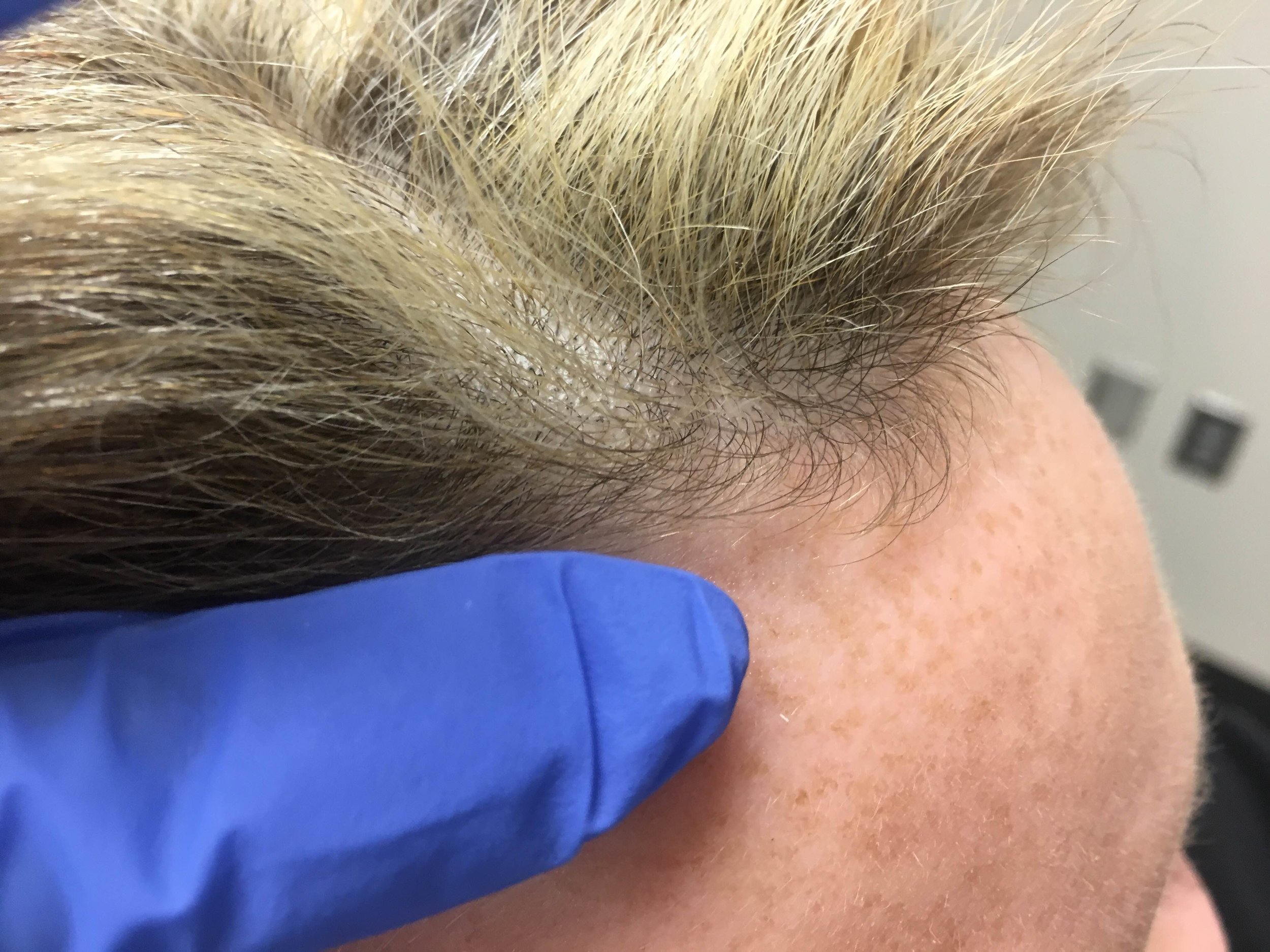I see many patients in the office for evaluation of hair loss. Hair loss is complicated and for most patients, it is also emotionally upsetting. What can we offer our patients who are suffering from hair loss?
The first step is an examination of the scalp and hairs and a thorough medical history. When I am examining someone’s scalp and hair, I am asking myself several questions — first, I am looking to see if there is evidence of scar tissue. Ideally when I examine someone’s scalp I hope to not see scar tissue, as that tells me that the process may not be permanent. Next, I examine the scalp to see if there is evidence of a rash or inflammation or infection — this might look like redness, scaling, bumps, or dandruff. Finally, I may consider ordering labs if a patient’s primary care physician hasn’t already, to evaluate for an underlying medical disorder — it is important to rule-out anemia, thyroid disorders, and other metabolic abnormalities.
After the first examination, it may be apparent immediately what the cause of the hair loss is and the diagnosis can be made, along with a discussion of treatment options.
If the diagnosis is not immediately obvious, I will often recommend to the patient that he or she undergo a scalp biopsy. This is a small, minimally invasive procedure where a small portion of the scalp is numbed and a small piece of tissue is taken for microscopic examination. This procedure is not painful (other than the first stick of the needle for numbing!) and yields valuable information that often leads to the correct diagnosis.
Once the diagnosis is established, my patients and I can have a discussion about treatment options and what to expect. Lately, my favorite type of hair loss to diagnose is androgenic alopecia — or male- or female-pattern hair loss. Thankfully this is also the most common cause of hair loss.
Androgenic alopecia is mediated by hormones. All men and women have testosterone circulating in their bodies as part of their normal hormonal make-up. Unfortunately, some people have hair follicles that are extremely sensitive to their body’s normal levels of testosterone and what this results in is “miniaturization” of the hair follicles (which can be seen under the microscope with a biopsy). What miniaturization means is that the hair follicle (the organ that grows the hair shaft) is still present in the skin, but it is simply shrunk down to miniature size and is no longer growing a nice, healthy hair.
The good news about hair follicle miniaturization is that it is potentially reversible! Treatments include Rogaine 5% solution to the scalp, prescription medications such as finasteride (for men) and spironolactone (for women) to block the hormones at the level of the hair follicles, and PRP (platelet-rich plasma) injections into the scalp.
PRP injections are the latest trend in treating hormone-mediated hair loss and the good news, if started early in the disease course (within the first few years), it often works and works extremely well! We draw your blood at your procedure appointment and spin it down in a centrifuge, then extract the platelet-rich plasma and inject it back into your scalp. PRP contains your body’s own growth factors to stimulate those resting miniaturized hair follicles to get back into growth phase and start growing hairs again! PRP injections are performed monthly x4 months, and then twice annually for maintenance.
If you are interested in scheduling a consultation to evaluate your hair loss, call us today at 615-212-3012! We’d be happy to help you out.


